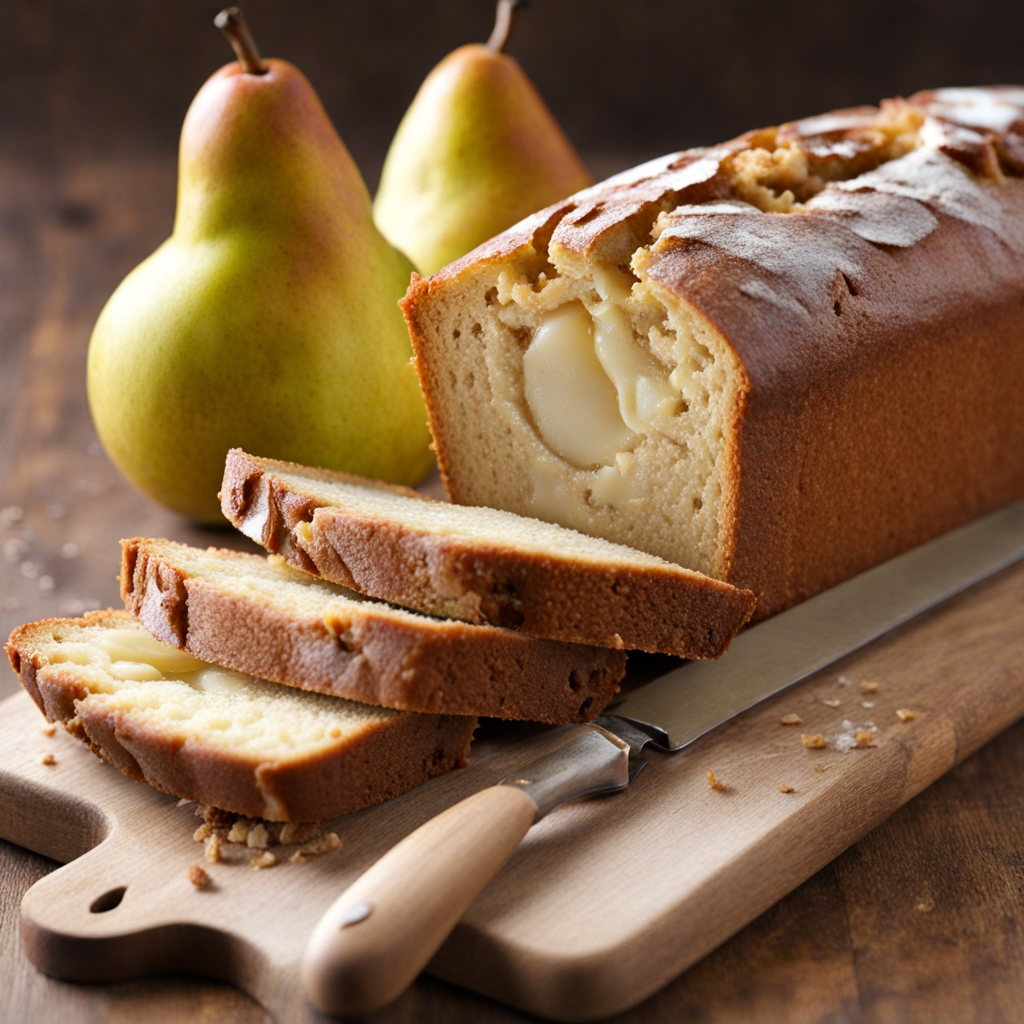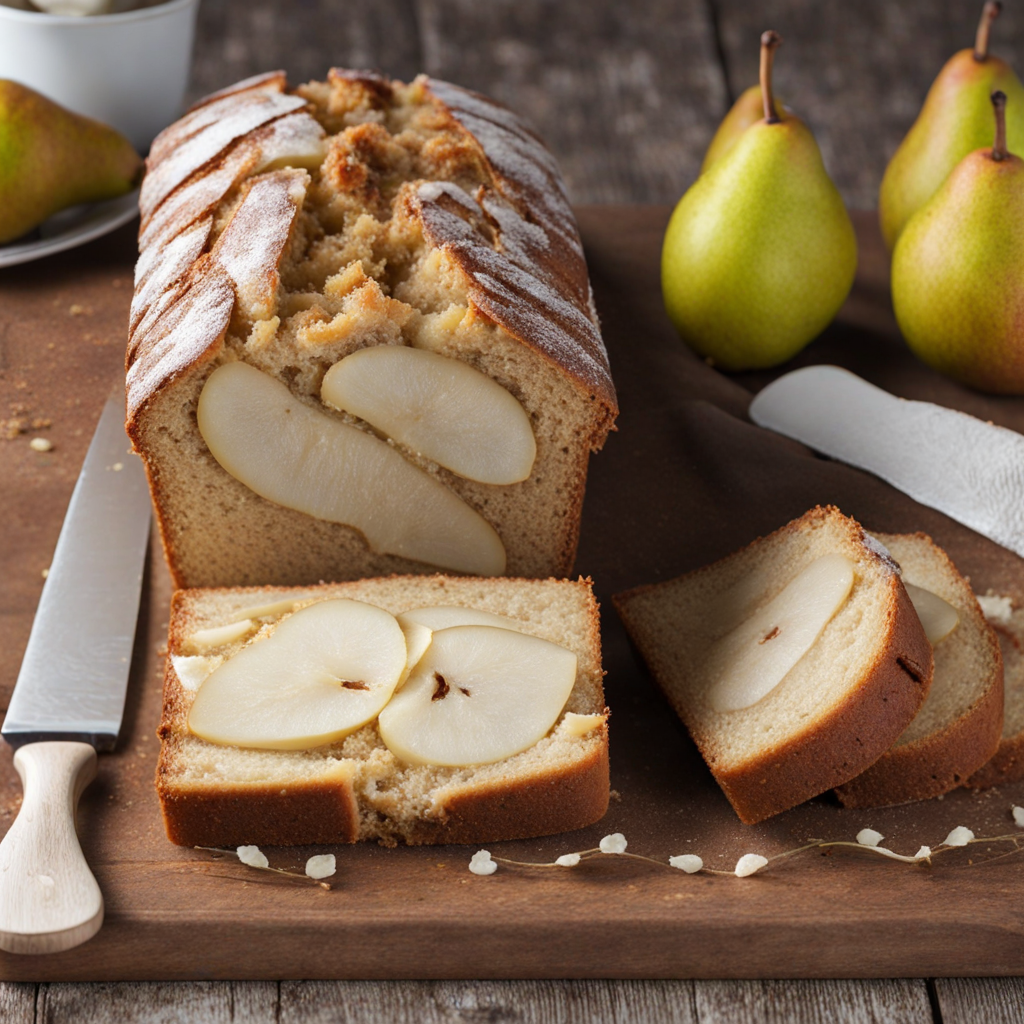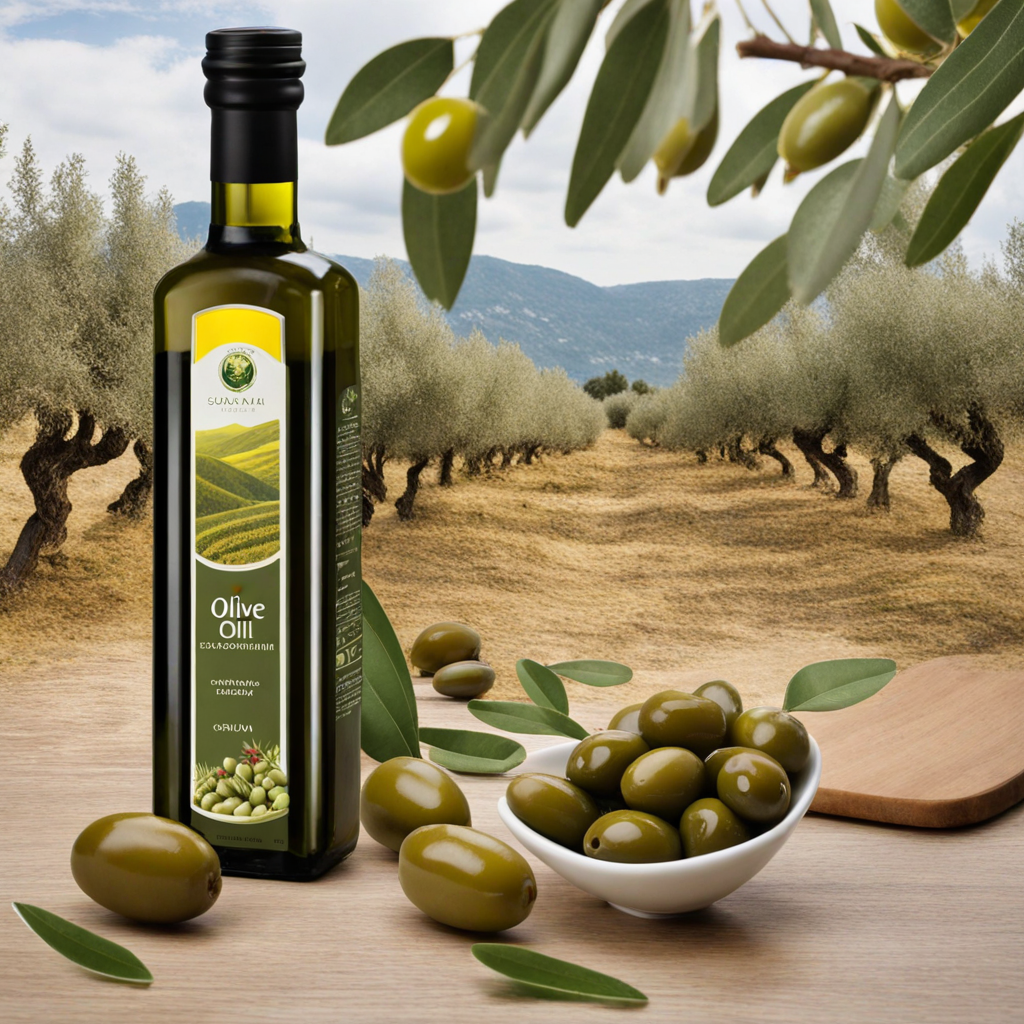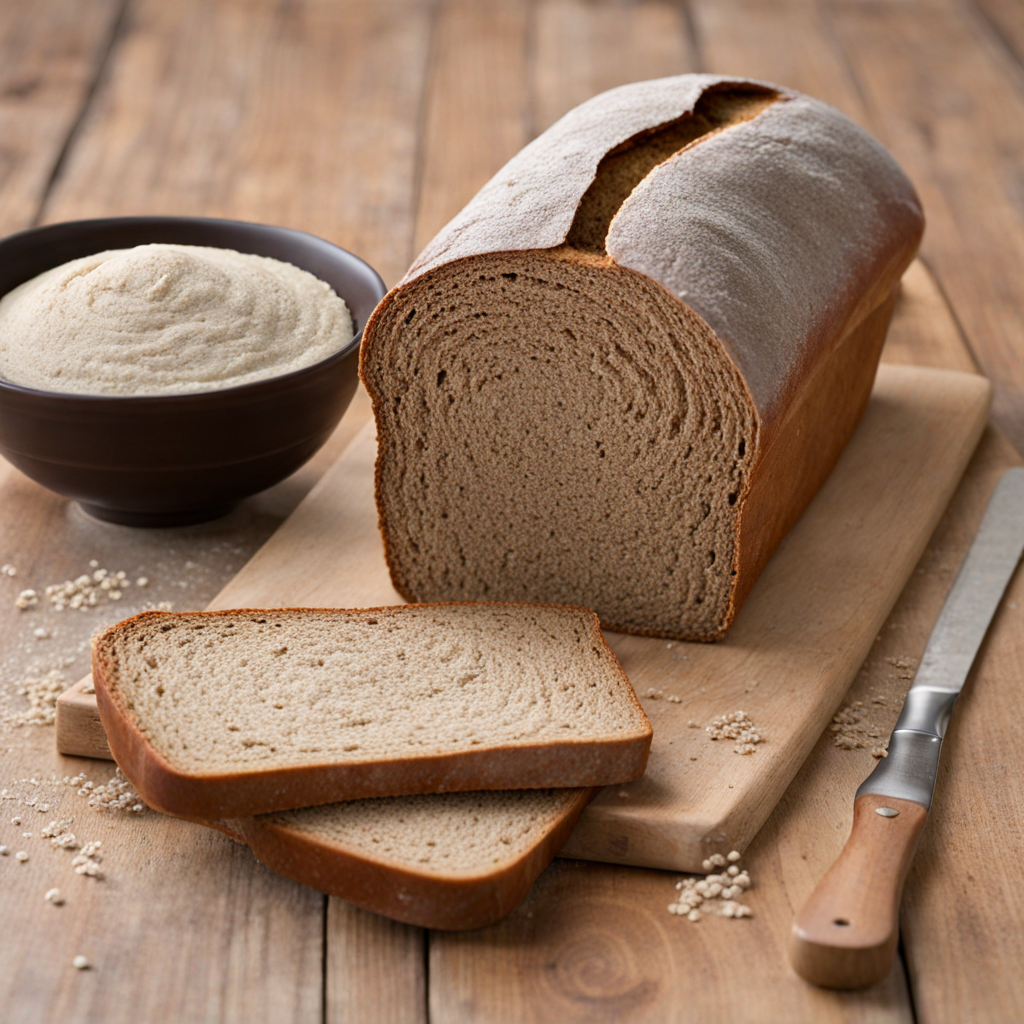Pear Bread
Pear Bread, a delightful Slovenian treat, is a unique fusion of sweet and savory flavors that reflects the country's rich agricultural heritage. The bread is made using ripe, juicy pears, which impart a natural sweetness and moisture to the dough. Typically, the recipe combines whole wheat flour with the sliced or pureed fruit, creating a tender crumb that is both hearty and flavorful. The addition of warm spices like cinnamon and nutmeg enhances the pear's sweetness, while a touch of honey or brown sugar can add depth, making each bite a comforting experience. What sets Pear Bread apart is its versatility; it can be enjoyed in various ways. Sliced and toasted, it makes for a perfect breakfast paired with butter or cream cheese. Alternatively, it can be served as a delightful accompaniment to cheese platters, where its sweetness balances out the savory notes of aged cheeses. Some bakers even incorporate nuts such as walnuts or almonds for added texture, making each loaf a unique creation that reflects personal taste and creativity. In Slovenia, Pear Bread is often associated with family gatherings and festive occasions, symbolizing warmth and togetherness. It offers a delightful way to explore the use of seasonal fruits in baking, showcasing the beauty of Slovenia's natural bounty. Whether you savor it fresh out of the oven or let it sit to develop deeper flavors, Pear Bread is sure to surprise and satisfy anyone looking for a new taste experience.
How It Became This Dish
Hruškov Kruh: A Culinary Legacy from Slovenia Hruškov kruh, or pear bread, is a delightful Slovenian specialty that reflects the rich agricultural heritage and culinary traditions of this picturesque Central European country. With its origins deeply rooted in the rural communities of Slovenia, this unique bread is more than just a staple food; it embodies the spirit of Slovenian hospitality, seasonal abundance, and the intertwining of everyday life with the rhythms of nature. Origins The tradition of baking hruškov kruh can be traced back to the agrarian lifestyle of Slovenian peasants, who relied heavily on seasonal produce and local ingredients. The hruška, or pear, has been cultivated in Slovenia for centuries, with the fertile valleys and diverse microclimates providing the ideal conditions for growing various pear varieties. Pears were not only a source of nourishment but also a symbol of abundance and prosperity, often celebrated in local folklore and festivals. Historically, hruškov kruh was made in the fall, coinciding with the pear harvest. Families would gather to pick ripe pears, and the excess fruit would be preserved through drying or baking. The bread itself is typically made from a combination of flour, water, yeast, and, of course, ripe pears. As the dough rises, the sweetness of the fruit infuses the bread, resulting in a moist, fragrant loaf that captures the essence of Slovenia's autumn bounty. Cultural Significance Hruškov kruh occupies a special place in Slovenian culture, particularly in the regions where pears are abundant, such as the Goriška and Posavje regions. It is often served during festive occasions, family gatherings, and community celebrations. The bread symbolizes hospitality; offering hruškov kruh to guests is a gesture of welcome and generosity. In many families, the recipe for hruškov kruh has been passed down through generations, each adding their unique twist to the traditional preparation. This familial connection to the bread fosters a sense of identity and continuity, linking the past with the present. During harvest festivals, local bakers often showcase their hruškov kruh, emphasizing the importance of local ingredients and traditional methods. Moreover, hruškov kruh is not only a food item but also a cultural artifact. It is often featured in Slovenian literature and art, symbolizing the simplicity and richness of rural life. The bread's presence at communal gatherings reinforces social bonds and fosters a sense of belonging among community members. Development Over Time As Slovenia underwent significant political and social changes throughout the 20th century, the preparation and consumption of hruškov kruh also evolved. The post-World War II era saw a shift in agricultural practices and urbanization, which impacted traditional foodways. Many rural families migrated to urban centers for better opportunities, leading to a gradual decline in the cultivation of traditional crops, including pears. However, the late 20th century marked a resurgence of interest in traditional Slovenian cuisine and local ingredients. This movement was fueled by a growing awareness of the importance of preserving culinary heritage and promoting sustainable agricultural practices. As Slovenes began to reconnect with their roots, hruškov kruh experienced a revival. Artisan bakers and home cooks alike began experimenting with the recipe, incorporating new techniques and flavors while maintaining the essence of the traditional loaf. Contemporary interpretations of hruškov kruh often feature the addition of spices, nuts, or even chocolate, catering to modern palates while honoring the original recipe. Additionally, the rise of the farm-to-table movement has encouraged local producers to cultivate and promote heritage pear varieties, ensuring that this vital ingredient remains integral to the bread's identity. Conclusion Today, hruškov kruh is a beloved staple in Slovenia, embodying the convergence of tradition and innovation. It serves as a reminder of the country's rich agricultural heritage and the importance of community in preserving culinary customs. Whether enjoyed fresh from the oven, slathered with butter, or paired with cheese and cured meats, hruškov kruh continues to be a cherished symbol of Slovenian culture. As Slovenia embraces its culinary diversity and continues to evolve in the global food landscape, hruškov kruh stands as a testament to the resilience of traditional foodways and the vital role they play in shaping national identity. From its humble origins as a peasant's bread to its place on the tables of contemporary Slovenes, hruškov kruh remains a delicious and meaningful expression of the country's rich history and culture.
You may like
Discover local flavors from Slovenia







